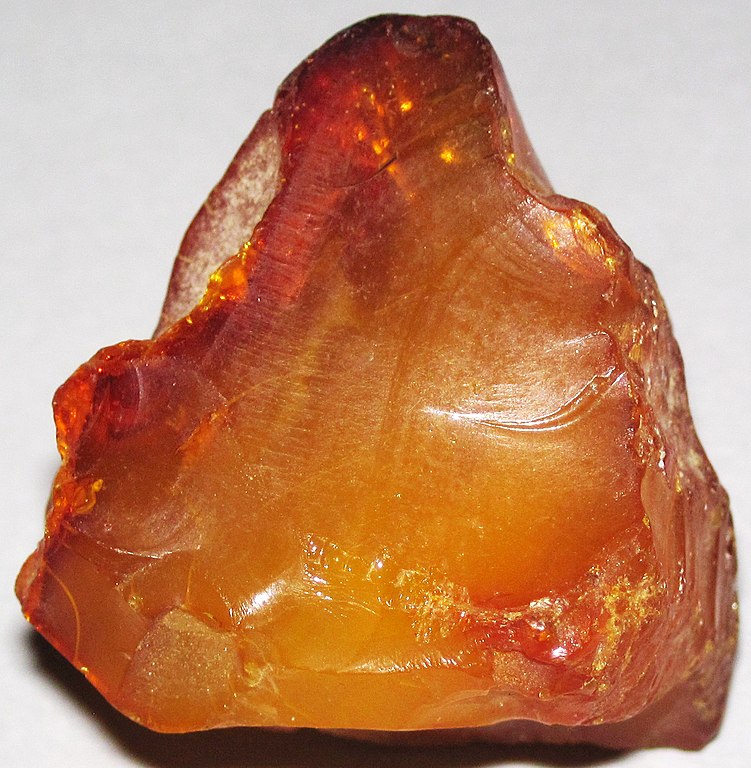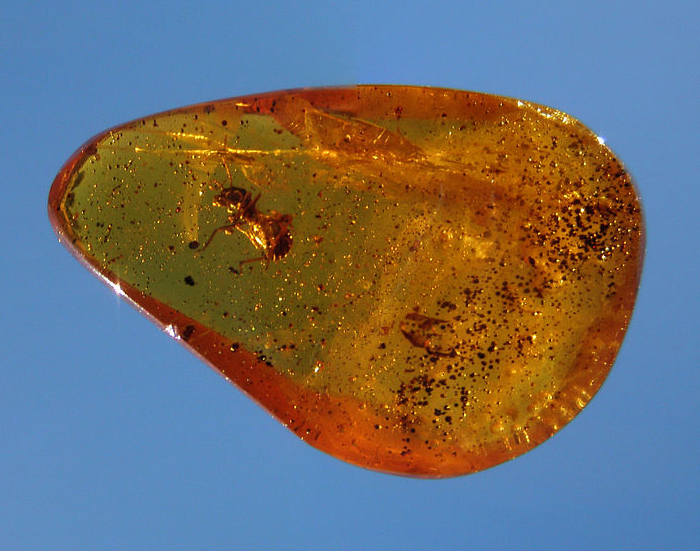Amber
Most of the minerals we talk about are formed in geologic processes, but amber (which isn’t really a mineral) is formed in a much more simple way—as it gets older, it gets harder. What is amber? Amber started out, 100 million years or more ago, as tree resin, which is the same thing as pitch (such as sticky “pine pitch” you find on pine trees) and is used by trees to protect parts of the tree that get damaged. The sap oozed out of a tree, maybe where a branch broke off, and fell on the ground or stuck to the tree itself. And while it was oozing, falling, or sticking, it’s possible that a bug got stuck in it, or a piece of a plant, or a snail, etc. Over millions of years, the sap hardened, partially by drying up, and partially by some of the chemicals in it changing, until it got to a Mohs hardness of 2 or so. In the present, we can find amber where ancient forests used to be, and often with ancient things inside it, and use it in pieces of jewelry. Although the jewelry can be quite lovely, amber is also very useful for scientists studying ancient life—paleontologists—because they can analyze the things they find inside it. Amber occurs in a number of places. The main and most famous source for amber is the area around the Baltic Sea, including a number of Eastern European countries, such as Poland and Estonia. You can also find amber in the home of larimar, the Dominican Republic, as well as other islands nearby. Other sources include Mexico, Myanmar, Canada, Ukraine, and Italy, among others.
| Formula | Group or Type | Shape | Hardness | Specific Gravity | Streak | Luster |
|---|---|---|---|---|---|---|
| — | — | Amorphous | 2–2.5 | 1–1.11 | White | Resinous |

